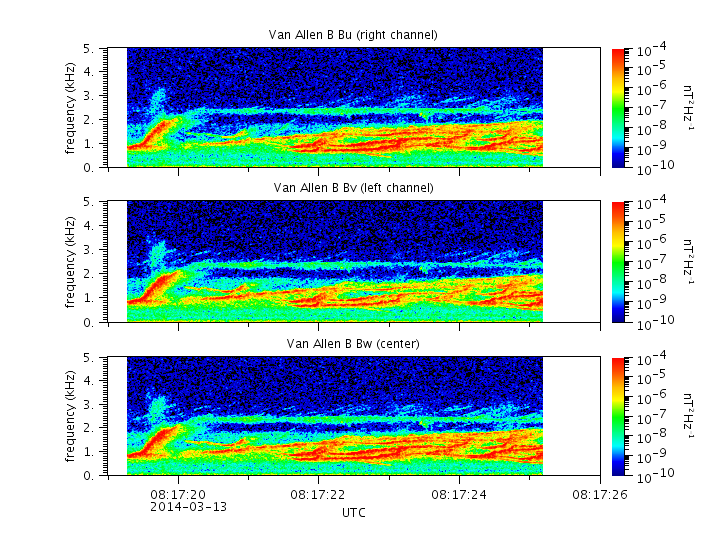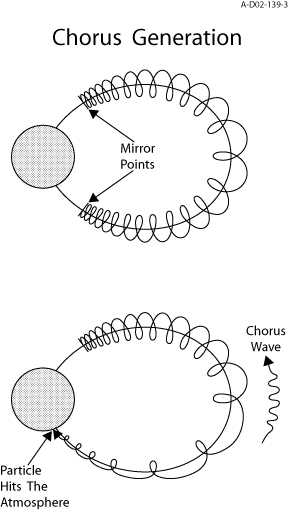Van Allen Probes EMFISIS Waves
Exotic Chorus 2014-03-13

|
|
|
|
AVI animation with moving cursor |
|
|
|
AVI animation with moving cursor (extended) |
|
Chorus emissions get their name from the "dawn chorus" song of tropical birds. This example features some especially exotic song with constant or slowly drifting narrowband tones that are not well understood. Chorus is thought to play an important role in transferring energy to radiation belt electrons which can attain such high velocities that they can damage satellite systems. These signals were recorded by the Van Allen Probes B spacecraft EMFISIS Waves instrument on 2014-03-13 during hour 08 UTC. The measurements of three orthogonal magnetic antennas Bu, Bv, and Bw were combined to make the 6-second stereo audio recording and the 125-second extended cut. The video presents a frequency-time spectrogram for the three antennas, with a moving cursor that shows the time position of the audio track. Time advances from left to right along the horizontal axis, frequency ranges from low to high frequencies along the vertical axes, and the amplitude of the signals is color coded with blue indicating weak signals and red indicating strong signals. |

|